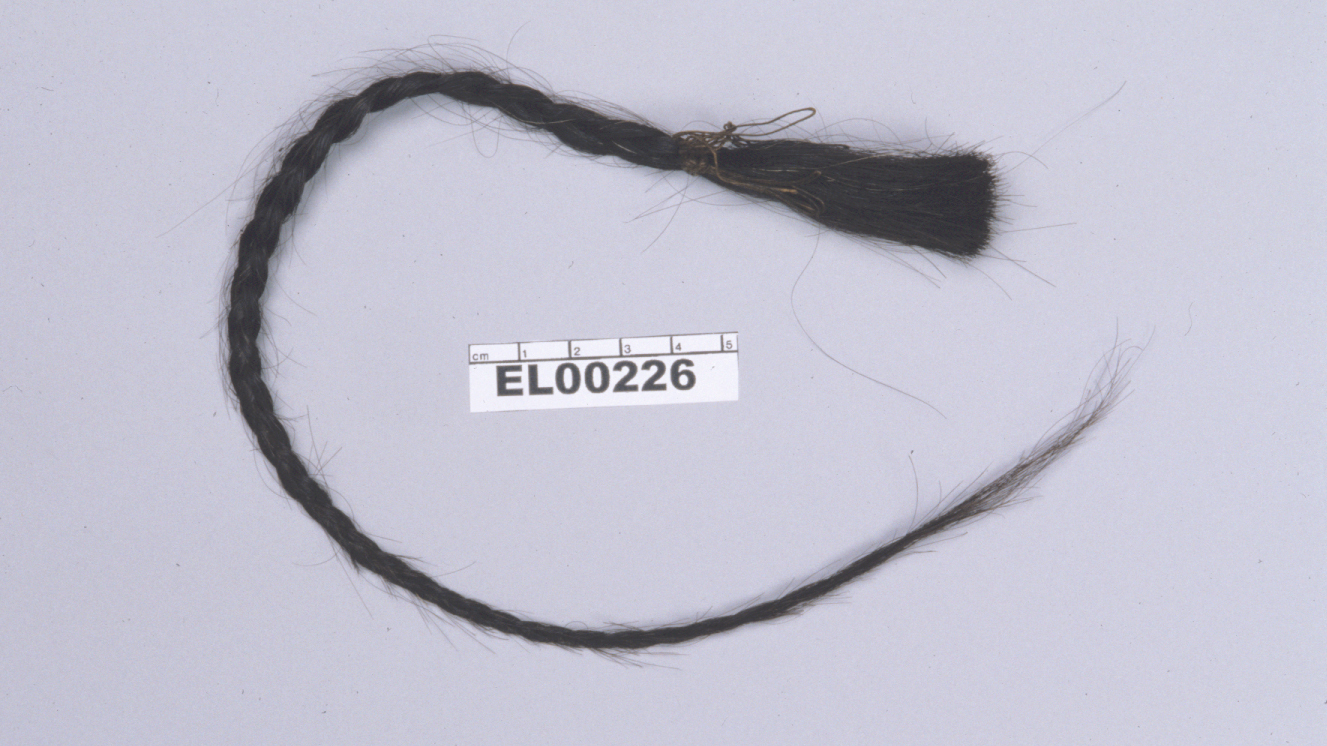Great-grandson of iconic Native American leader Sitting Bull confirmed by DNA analysis
Researchers analyzed the hair from Sitting Bull's scalp lock.

Science has confirmed a man in South Dakota is the great-grandson of the iconic Native American leader Sitting Bull. DNA from the famous chieftain's hair matched that of Ernie LaPointe, who has long claimed this famous relation.
Sitting Bull, also known as Tatanka-Iyotanka, led the Lakota tribe of Sioux people in what is now South Dakota. He is most notable for being the military leader who famously defeated U.S. Lt. Col. George Custer at the Battle of Little Bighorn in 1876. Sitting Bull then fled the country and eventually returned to join Buffalo Bill Cody's Wild West Show. But in 1890, government-led Indian police killed Sitting Bull while they were trying to arrest him, according to PBS.
The new finding reveals Sitting Bull's closest living relative is LaPointe, also a Lakota Sioux man. It is also the first time that ancient DNA has been used to confirm a familial relationship between living and historical individuals, according to the statement.
Related: The 25 most mysterious archaeological finds on Earth
"We managed to locate sufficient amounts of autosomal DNA in Sitting Bull's hair sample, and compare it to the DNA sample from Ernie LaPointe and other Lakota Sioux," lead researcher Eske Willerslev, an evolutionary geneticist at the University of Cambridge in England, said in a statement. "And [we] were delighted to find that it matched."
(Autosomal DNA refers to genetic material found on the 22 pairs of non-sex chromosomes.)
Unproven ancestry
Until now, LaPointe had relied on birth and death certificates to create a family tree that linked him to Sitting Bull. Because those certificates can be forged, the claim has been consistently challenged.
Get the world’s most fascinating discoveries delivered straight to your inbox.
"Over the years, many people have tried to question the relationship that I and my sisters have to Sitting Bull," LaPointe said in the statement. However, when the Smithsonian's National Museum of Natural History in Washington, D.C., returned Sitting Bull's scalp lock to LaPointe in 2007, it provided a unique opportunity to settle the debate once and for all.

Willerslev, who "almost choked on his coffee" upon hearing that a sample of Sitting Bull's hair was being released by the museum, knew that this was a once-in-a-lifetime opportunity to study the iconic leader's DNA, according to the statement.
"I wrote to LaPointe and explained that I specialized in the analysis of ancient DNA, and that I was an admirer of Sitting Bull, and I would consider it a great honour if I could be allowed to compare the DNA of Ernie and his sisters with the DNA of the Native American leader's hair when it was returned to them," Willerslev said in the statement.
LaPointe gave the researchers his permission to analyze a small sample of the lock of hair, while the rest was burned in a spiritual ceremony. But it proved to be extremely challenging to extract DNA from the sample because the hair had not been properly preserved by the museum and was in poor condition, according to the statement.
DNA analysis
Willerslev and his team spent 14 years trying to extract DNA from the degraded hair and match it to LaPointe. Part of the reason this was so challenging is that the researchers required autosomal DNA to confirm LaPointe's claim.
In the past, studies using DNA analysis have relied on sex-specific DNA samples to answer questions about ancestry. For example, DNA in the Y-chromosome, which is exclusively found in males, can be used to trace ancestry through the male line (fathers to sons). And DNA from the mitochondria, an energy-producing organelle found in our cells, is exclusively passed on to offspring from females, according to the statement.
Because LaPointe claimed to be related to Sitting Bull on his mother's side, the researchers required autosomal DNA, which is a mix of both parents' DNA, to trace his genetic lineage. Unfortunately, this type of DNA is hard to extract from ancient DNA samples, especially when the samples are in poor condition. So, the researchers developed a new technique to solve the problem.

This method involves comparing what limited DNA can be extracted from the sample with that of another individual, as well as other individuals from the same population— in this case, LaPointe and other Lakota Sioux individuals. This allows researchers to work out the frequency of certain alleles (different variations of the same genes) in a population and then use computer models to work out the probability that two individuals have the same alleles by chance, or if they can share them only if they are directly related.
Related: 10 biggest historical mysteries that will probably never be solved
The new technique could be used to solve other famous historical mysteries, according to the statement. "In principle, you could investigate whoever you want, from outlaws like Jesse James to the Russian Tsar's family [the Romanovs]," Willerslev said. "If there is access to old DNA, typically extracted from bones, hair or teeth, they can be examined in the same way."
A proper burial
Sitting Bull has two recognized graves, one near where he died in Fort Yates, North Dakota, and one in Morbridge, South Dakota. Nobody is sure which is his actual resting place, because no one knows what happened to his body after he was killed, and both sites have become popular tourist attractions. But neither are places that were important to either Sitting Bull or the Lakota Sioux people.
LaPointe believes that the grave at Morbridge is the most likely resting place of Sitting Bull and now that he has been confirmed as a direct descendent, he hopes to be able to reclaim his great-grandfather's body and bury it somewhere else. However, scientists first have to compare the DNA of the body at Morbridge with the scalp lock DNA to confirm its identity.
The researchers are happy to have played their part in helping confirm LaPointe's relationship with Sitting Bull and hope that the chieftain's body can eventually be returned to his family for a proper burial.
"Sitting Bull has always been my hero, ever since I was a boy," Willerslev said in the statement. "I admire his courage and his drive."
The study was published online Oct. 27 in the journal Science Advances.
Originally published on Live Science.

Harry is a U.K.-based senior staff writer at Live Science. He studied marine biology at the University of Exeter before training to become a journalist. He covers a wide range of topics including space exploration, planetary science, space weather, climate change, animal behavior and paleontology. His recent work on the solar maximum won "best space submission" at the 2024 Aerospace Media Awards and was shortlisted in the "top scoop" category at the NCTJ Awards for Excellence in 2023. He also writes Live Science's weekly Earth from space series.
